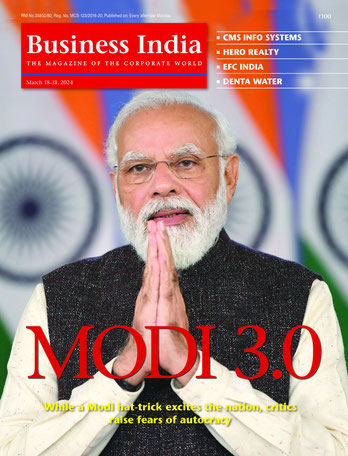
India is making a huge contribution to the world. It has figured out how an emerging economy can get the cheapest electricity ever – with no natural advantages of fuel, capital or technology. India’s renewable electricity revolution – if better broadcast – would be the envy of Asia.
Homes and businesses in Thailand, Indonesia, the Philippines, and yes, Pakistan, are paying twice what they should for electricity, because they have not embraced India’s approach to renewable power. Leverage auctions. Reduce bureaucratic costs. Derisk lenders.
I have a long engagement with India’s power challenges. Fifty years ago when I worked on the Chotanagpur Plateau it looked like universal electrification through a US model – the Damodar Valley Corporation was a knock off on Franklin Roosevelt’s TVA. That proved a blind alley. But India’s new pathway, speeding up the adoption of wind and solar, sponsoring the International Solar Alliance, and investing in the cutting edge – is truly India’s destiny.
According to analysts including Wood Mackenzie and Bloomberg New Energy Finance, the costs of wind and solar power in Indian reverse auctions are 50 per cent or even 67 per cent lower than those of India’s neighbours in South and Southeast Asia, as well as other emerging markets.
These numbers are even more astonishing when we factor in that India overall has high costs of capital relative to other emerging Asian markets. In five years, India has managed to slash wind and solar prices; the wind components are largely domestic, but use the technology available to other nations; the solar components are still, largely, imported.
The key ingredients are lowering soft costs and de-risking finance. Small, but vital steps, like eliminating the challenge of assembling land by anchoring renewables auctions in solar and wind parks, or guaranteeing off-take with take or pay contracts, have been essential in making this revolution possible.
This story has not been told. Few in India realise that the country has become the global leader in making cheap, reliable, domestic and clean renewable electricity the clear winner in the competition for power technologies of the 21st century. Citizens and businesses in other emerging markets, particularly in Asia, do not know that they are breathing hugely more pollution than they need to, because their governments have not copied the Indian model: create supportive policy, manage soft costs, access smart finance.
A low price provider of renewable power:
This lack of awareness has denied the global community the economic and environmental benefits of the Indian experience; it also denies India a potential export market and the leadership role it deserves. The emerging energy storage market represents an even larger potential export opportunity if combined with India’s current expertise in the renewable generation space.
India’s success in showing how wind and solar are already cheaper than coal and gas does not mean that India has given itself the power sector its growing economy and energy short population need and deserve. The failure to solve the problems plaguing the country’s network of state-based distribution companies, overinvestment in coal plants that are now having difficulty in repaying the banks and other incomplete power sector reforms remain significant challenges. Ensuring that an ever-increasing share of wind, solar and energy storage supply chains are part of the “Make in India” effort is still an incomplete endeavour.
Indeed, the wind and solar booms have hit some significant short term obstacles as a result of these challenges; the installation of new facilities has fallen below the rate the economy depends on. India’s renewable revolution cannot be taken for granted; the focus on bringing down soft costs and deploying smart finance needs constant attention from policymakers, civil society, and the private sector.
But India continues to forge ahead with new initiatives. Roof-top solar is the most rapidly growing segment of the power sector; reforms in the pricing and availability of power for irrigation pumps are opening up an enormous new opportunity for solar power, which is at its strongest when pumping needs are at their highest – on hot afternoons. India has yet to tap the full potential of its leadership in the International Solar Alliance (ISA), but its leadership role as a low price provider of renewable power gives the ISA a clear focus; spread the Indian low-cost renewables revolution around the world.
So overwhelming as the remaining problems must seem to those who must confront them, from an outsider’s perspective, India has secured a powerful position, as the deviser, and hence owner, of the tool kit that can give the entire developing world cheap, clean and domestically secure power to meet the needs of the Sustainable Development goals.
























